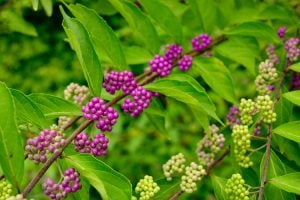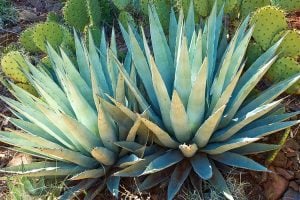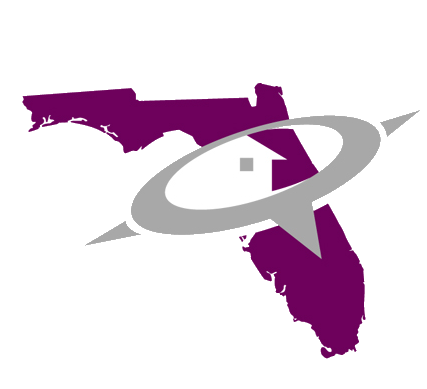The climate in Florida can sometimes frustrate you when you set up a garden. If you do not make the right plant choices, your landscape may appear uninviting and quickly drop in commercial value.
Fortunately, you can find plants perfect for the climate in Central Florida that you can use to enhance your landscape. The native plants can withstand the humid conditions and require little care to thrive. An added benefit is that you will maintain the natural flora of the region, which is part of the essence of Florida.
Here are some Florida-native plants that you can use to spruce up your landscape.
Beautyberry
It is also known as the American Mulberry. The plant blooms with pale-lavender pink flowers from spring to summer, which turn into a cluster of purple fruits at around September. They can grow at any time of the year and are drought tolerant.
If you want it to last for a long time, water it regularly until it gets established. Then it can tolerate any weather or poor conditions.
The plant can grow to about 3 to 8 feet tall and 4 to 8 feet wide. Thus, maintain it through constant pruning. Though, you should be careful not to trim the flowers. It is a favorite for many because of its ability to attract birds.
Firebush
It is a native and easy-to-grow woody shrub that produces gorgeous bright orange flowers in spring all the way to fall. The plant has a cottage-garden appeal and looks better in its natural shape than when trimmed. However, occasional trims are necessary to keep the plant at its best.
You can plant a firebush plant in summer or late spring. It best grows under the sun, but it can also thrive in the shade. A considerable advantage it holds is that it prefers growing on limestone soil, which you can readily find in Central Florida.
It can grow up to 15 feet, but you can prune it to keep it around 5 feet. Be careful to do it in the right way and avoid over-pruning as it can limit the production of flowers.
Agave Plants
They are one of the oldest plants in Florida that do not require any irrigation and have low maintenance. Agave solves your water-guzzling landscape issues with an added benefit of texture, color, and drama.
The plant is from a succulent family and is often confused with cactus. However, agave plants have leaves that cactus do not. The leaves have prickly thorns that can get pointy and grow to up a height of 10 feet. Therefore, grow them in an area not accessible to pets and kids.
Protect the agave from freezing during winter to prevent it from dying.
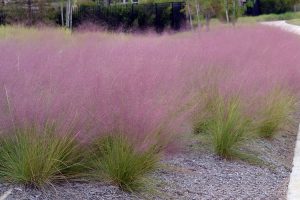
Muhly Grass
Muhly grass is one of the most beautiful native grass with a showgirl flair. The grass grows naturally and does not require any attention. They can grow in both inhospitable arid areas and cultivated gardens. The grass grows in clamps and can reach a height of 3 to 4 feet.
You can grow it under windows and along a short fence or in areas where you want to maintain the plant height. The grass grows in clusters that give the pinkish-purple blooms a fairy look in a summer breeze. If you are not a fan of pink, you can get grass with white flowers.
It grows to its best in a sunny area and may require frequent watering until it establishes a root system.
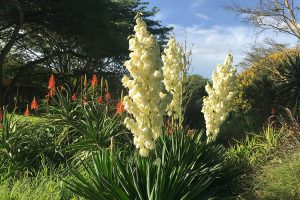
Yucca
You can help promote native plants in Florida by planting the yucca plant. The plant is drought-tolerant and can support the temperatures in Florida. It does not require much maintenance, making it easy to grow for both amateur and professional gardeners.
The plant requires plenty of space to grow since it can reach up to a width of 3 feet. Moreover, it has sharp leaves that can be dangerous to small children. However, since it is eye-catching and attractive, you may make it the focus in your garden, especially in summer, when it blossoms.
It will always make your garden look beautiful since it is an evergreen plant.
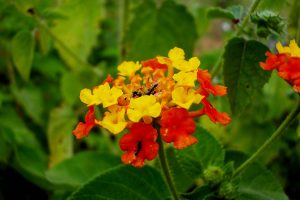
Lantana Flowers
The best way you can add color and interest to your garden is by planting lantana flowers. You can grow them in hanging containers or plant them in soil. However, the ground has to be acidic and well-draining.
It is best to plant them in spring, but they prefer warm weather to grow more abundantly. While new, you may require to water the flowers frequently. However, once they mature, they require less maintenance and can survive in dry conditions.
You should get lantana flowers if you want to see more butterflies and hummingbirds in your garden.
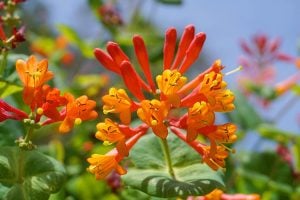
Coral Honeysuckle
Coral Honeysuckle is a flowering vine with a trumpet-shaped bloom great for planting near your fence and arbor. Some variations produce red flowers, while others produce yellow flowers throughout spring to summer.
It can grow to a height of 15 feet. Therefore, you need to prune it occasionally for a better look. The plant produces a lovely floral scent that lasts for weeks. It helps to attract butterflies, bees, and birds to your garden.

Silver Saw Palmetto
The silver saw palmetto is a native plant with saw-like leaves that you can use as a backdrop, accent, or as a hedge in your garden. The plant can spread up to 20 feet wide since they grow horizontally along the ground.
It produces yellowish-white flowers that are fragrant and berry-like fruits that ripen to a blue-black color. The plant does not require much maintenance since it is drought-tolerant once it matures. It can also tolerate high amounts of salt in the soil.
You can plant them indoors or outdoors, depending on your preference. You may also plant the plant in pots to achieve a more dramatic look.
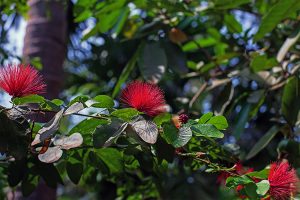
Powderpuff
Powderpuff is one of the best native groundcover replacement wildflowers you can grow in your garden. The plant has bluish-green leaves and many small flowers with a pinkish to lavender color.
It is a favorite for bees, butterflies, and birds. It can grow in both dry and moist environments with minimal maintenance. The plant can reach a height of 6 to 9 feet. However, you can maintain it to your preferred size through mowing.
Your landscape needs to be appealing enough for your property value to increase. It also plays a vital role in drawing in prospective home buyers and giving you a sense of accomplishment.
Since the weather in Central Florida may become harsh, you need to grow the right plants that can thrive with little maintenance. The above list of drought-resistant plants may just be what you need if you want to revamp your garden or increase its commercial value.


